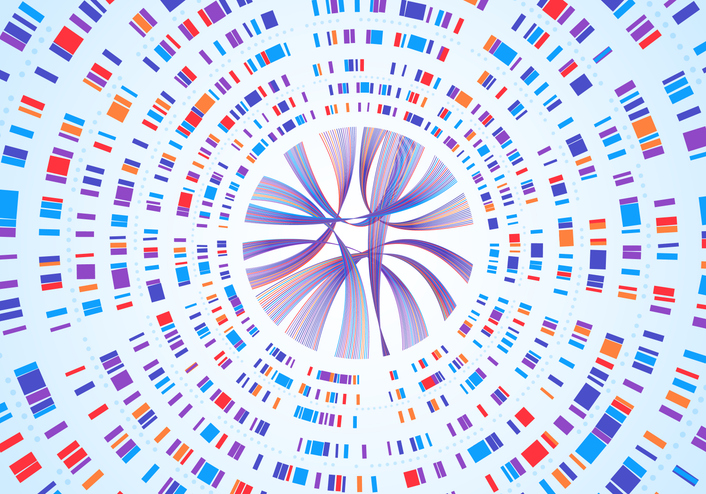The contribution of genetics to the variability in people’s metabolism has remained largely unknown. This is, in part, because genetic studies of human metabolism have been limited in scale and allelic breadth. Now, the largest genetic map of human metabolism has been created, revealing new insights on the role of metabolites in health and disease and creating a blueprint for further research.
This work is published in Nature Genetics in the paper, “A genetic map of human metabolism across the allele frequency spectrum.”
The team used data from ~450,000 individuals through the UK Biobank. The authors examined the consequences of variation in our genetic code on blood levels of 250 small molecules including lipid levels.
More specifically, the group presents a map of the genetic regulation of circulating small molecules and lipoprotein characteristics (249 traits) measured using proton nuclear magnetic resonance spectroscopy across the allele frequency spectrum. Trans-ancestral meta-analyses, they say, identified 29, 824 locus–metabolite associations mapping to 753 regions.
By combining large-scale genetic data from European, African, and Asian individuals living in the U.K. with detailed metabolomic measurements, the team systematically identified genes contributing to human metabolism. Results showed that genetic control of metabolites was very similar across ancestries and between men and women and large ancestral groups represented in UK Biobank. This included genes with previously unknown roles in metabolism.
The study also provided insights into genes associated with metabolism that predispose to disease. In addition, they “observe and classify extreme genetic pleiotropy, identify regulators of lipid metabolism, and assign effector genes at >100 loci through rare-to-common allelic series.”
Lastly, they propose roles for genes less established in metabolic control (for example, SIDT2), genes characterized by phenotypic heterogeneity (for example, APOA1) and genes with specific disease relevance (for example, VEGFA).
Studies of this magnitude are made possible by the emergence of biobanks worldwide. “We are now able to map systematically the genetic control of hundreds of blood molecules, at unprecedented scale,” said Martijn Zoodsma, PhD, postdoctoral researcher at the BIH in Berlin. “This provides a powerful reference to understand disease risk and identify genes that contribute to variability in metabolism.”
“The development of blood lipid-lowering medications, such as statins, has saved numerous lives, but heart diseases remain the major killer,” noted Maik Pietzner, PhD, professor for Health Data Modelling at BIH and Queen Mary’s Precision Health University Research Institute (PHURI). “Our results highlight potential avenues that will hopefully lead to new medicines to prevent even more deaths from lipid plaques building in people’s arteries.”

